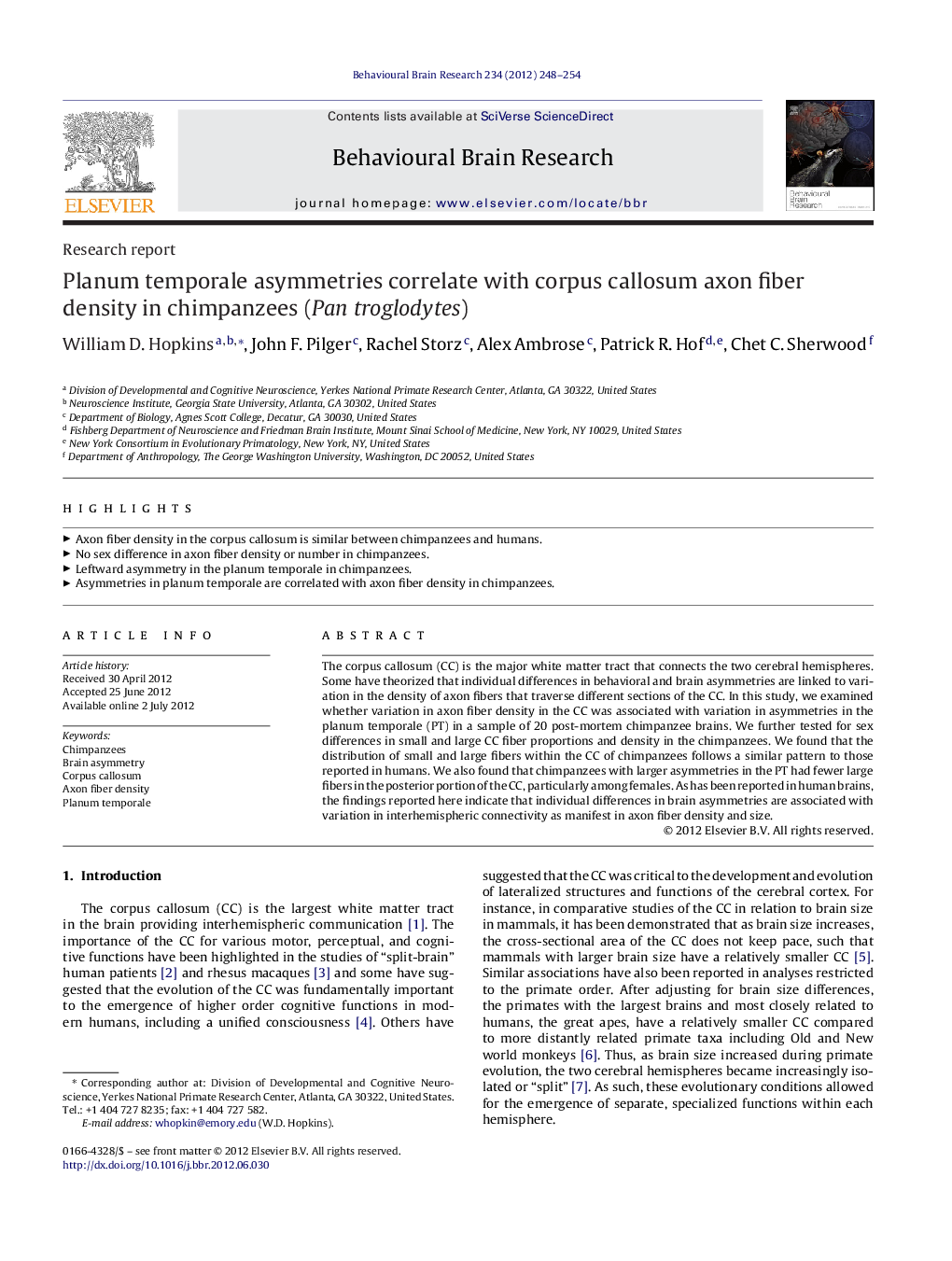| Article ID | Journal | Published Year | Pages | File Type |
|---|---|---|---|---|
| 4312951 | Behavioural Brain Research | 2012 | 7 Pages |
The corpus callosum (CC) is the major white matter tract that connects the two cerebral hemispheres. Some have theorized that individual differences in behavioral and brain asymmetries are linked to variation in the density of axon fibers that traverse different sections of the CC. In this study, we examined whether variation in axon fiber density in the CC was associated with variation in asymmetries in the planum temporale (PT) in a sample of 20 post-mortem chimpanzee brains. We further tested for sex differences in small and large CC fiber proportions and density in the chimpanzees. We found that the distribution of small and large fibers within the CC of chimpanzees follows a similar pattern to those reported in humans. We also found that chimpanzees with larger asymmetries in the PT had fewer large fibers in the posterior portion of the CC, particularly among females. As has been reported in human brains, the findings reported here indicate that individual differences in brain asymmetries are associated with variation in interhemispheric connectivity as manifest in axon fiber density and size.
► Axon fiber density in the corpus callosum is similar between chimpanzees and humans. ► No sex difference in axon fiber density or number in chimpanzees. ► Leftward asymmetry in the planum temporale in chimpanzees. ► Asymmetries in planum temporale are correlated with axon fiber density in chimpanzees.
